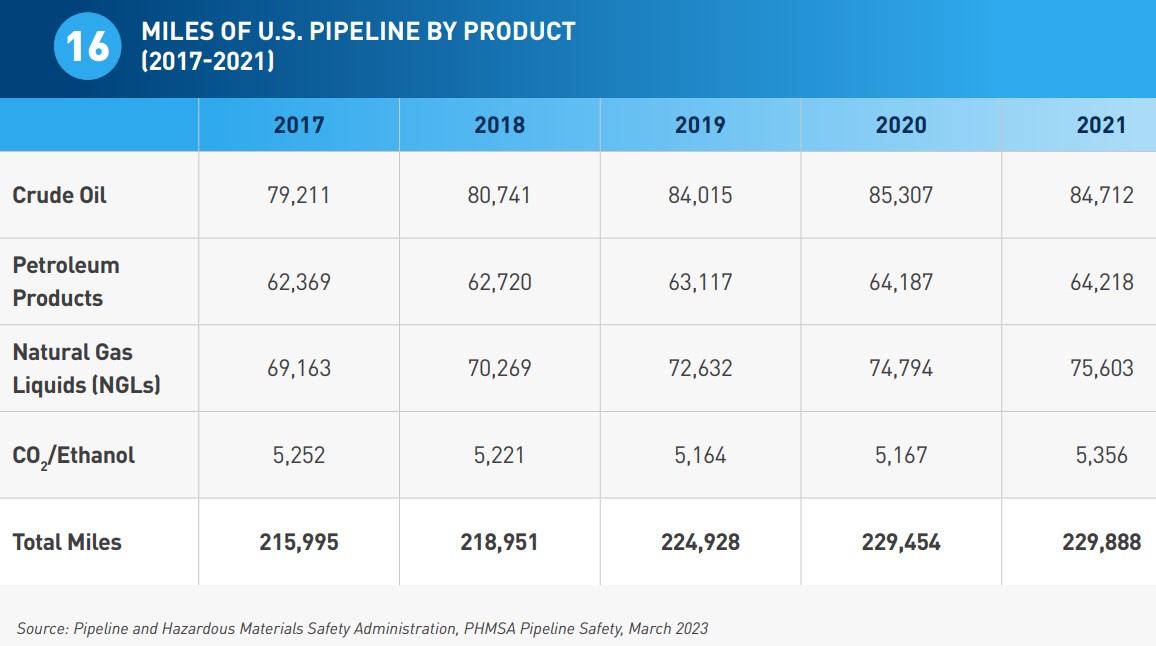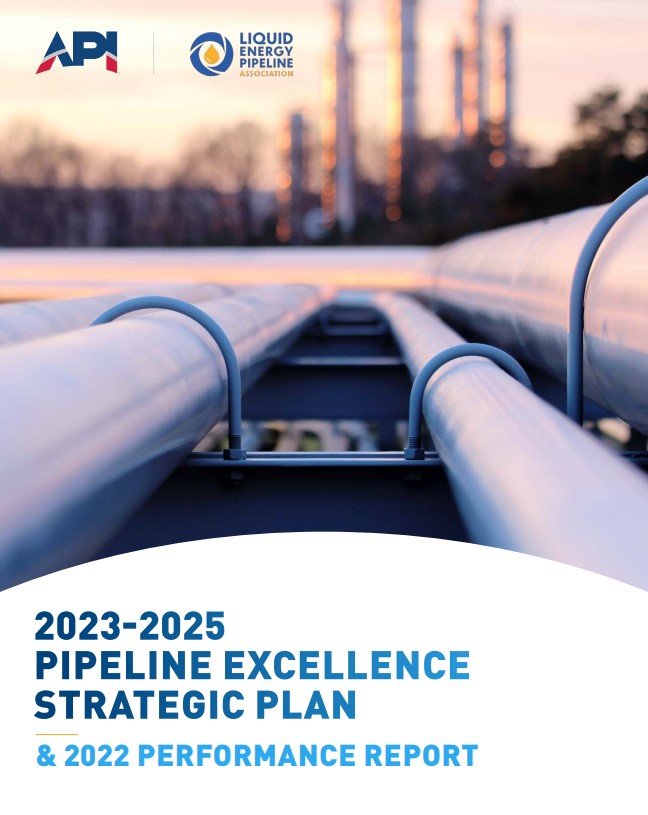Pipeline Report: Sector Continues to Drive Safety Culture
Mark Green
Posted May 3, 2023
Key takeaways from the new annual pipeline safety and performance report issued by API and the Liquid Energy Pipeline Association (LEPA) this week – all of which point to a U.S. pipeline sector that continues to build on a record of safety:
- 99.999% safety record – A barrel of oil or refined products delivered by pipeline arrives safely at its destination virtually every single time.
- Incidents down – Over the past five years (2018-2022), total liquids pipeline incidents are down 28%, with incidences affecting people or the environment down 16%.
- Planning safety – Pipeline operators have a strong strategic plan in place for continuous improvement in performance, toward a goal of zero incidents.
Some of the best examples of pipeline safety in action are recipients of the 2022 API Distinguished Pipeline Safety Awards announced this week – MIPC (small operator winner), ExxonMobil Pipeline Company (medium operator winner) and Phillips 66 Pipeline (large operator winner).
Cumulatively, the U.S. liquid pipelines system totaled nearly 230,000 miles at the end of 2021 (most recent data year). These included crude oil pipelines (37% of total mileage), natural gas liquids pipelines (33%) and refined products pipelines (28%). More than 21 billion barrels of crude oil and refined products were transported in 2021.

This modern delivery system safely takes energy from where it is produced to refining or processing locations and then to where fuels and other products are needed – the vital energy arteries that power the economy and modern standards of living. Steven A. Yatauro, from ExxonMobil Pipeline, chairman of the API-LEPA Pipeline Safety Excellence Steering Committee:
“Pipelines connect us to the energy we need and use every day, from heating our homes, to powering our vehicles, to supplying our manufacturing and help keep input costs low. But we know life is so much more complicated. … Yet, we continue to deliver affordable energy reliably and safely. One thing remains constant: pipelines are a safe way to move large volumes of liquid energy.”
Safety is a continuous priority and mission for pipeline companies built on strong relationships with hosting communities and the ability of companies to add to the professionalism of their workers. Robin Rorick, API vice president of Midstream Policy:
“Pipeline operators are engaging with local communities to advance a safe, reliable and sustainable energy future and rising to confront new challenges, from securing operations from increasingly complex cyber threats to attracting an educated, dynamic workforce.”
Let’s dig into the pipeline sector’s safety performance.
Protecting People and the Environment
For starters, pipeline incidents affecting people or the environment continued to decrease from 2018-2022. Total pipeline incidents also were down:

Most Incidents are Relatively Small
Last year, 58% of incidents involved less than five barrels and 78% were less than 50 barrels. Large pipeline incidents are the rarest, with only 8% in 2022 totaling 500 barrels or more. These are down 12% over the past five years.

Containment and Causes
When pipeline incidents occurred, most of the time (71%) they were contained within an operator’s property. These include pump stations, tank farms and terminals. Incidents that occurred off an operator’s property decreased 25% from 2018-2022.
Most often, liquid pipeline incidents were traced back to equipment failure – 48% of incidents from 2018 to 2022. Other causes: corrosion failure (20%) incorrect operation (15%) and material pipe/weld failures (primary source of large volume releases) at just 6%.
More from Yatauro:
“For the pipeline industry, no matter what our performance record says, we always want to do better. Internally we call that continuous improvement. We have a goal of zero incidents, because that is the safety culture we want to drive.”
Planning Strategically for Safety
The API-LEPA report lays out a strategic plan for continuous safety and performance improvement. The plan includes these goals:
- Promoting organizational and workforce excellence – Including expanded use of safety management systems by operators and attracting and retaining quality employees.
- Use technology and innovation to improve safety – Including improved inspection capabilities, enhanced leak detection and increased detection and mitigation of threats from geohazards (ground movement and landslides).
- Focus on stakeholders – Including improved stakeholder engagement (API Recommended Practice 1185 is forthcoming) and enhanced engagement with emergency responders.
- Address cybersecurity threats – Including engagement with policymakers on effective pipeline cybersecurity strategies and inter-agency collaboration.
- Safe and sustainable energy future – Including development of a carbon dioxide pipeline emergency planning and response guide for pipeline operators, and working to continue reducing emissions from pipelines, tanks and facilities through programs of The Environmental Partnership.
About The Author
Mark Green joined API after a career in newspaper journalism, including 16 years as national editorial writer for The Oklahoman in the paper’s Washington bureau. Previously, Mark was a reporter, copy editor and sports editor at an assortment of newspapers. He earned his journalism degree from the University of Oklahoma and master’s in journalism and public affairs from American University. He and his wife Pamela have two grown children and six grandchildren.



